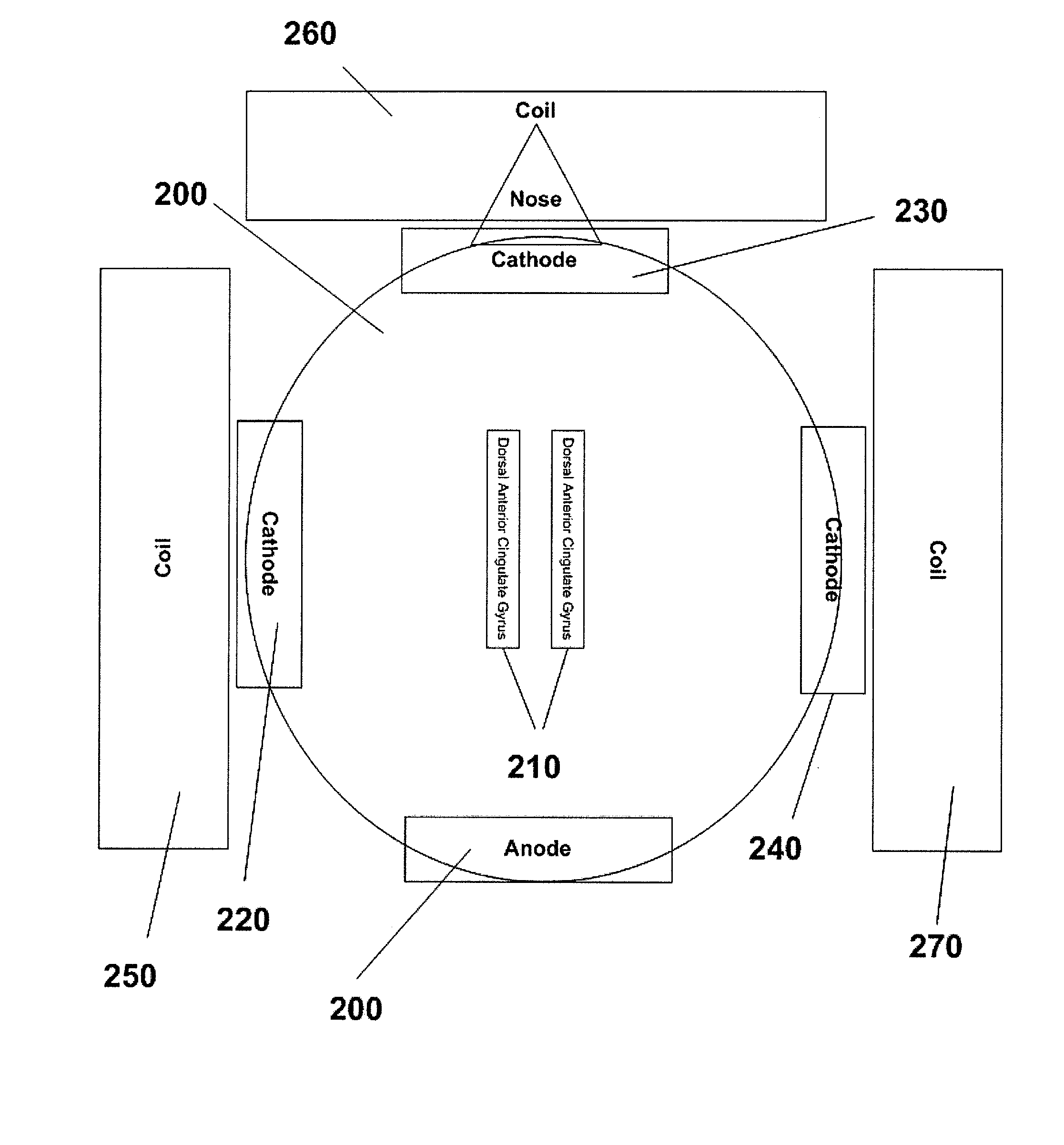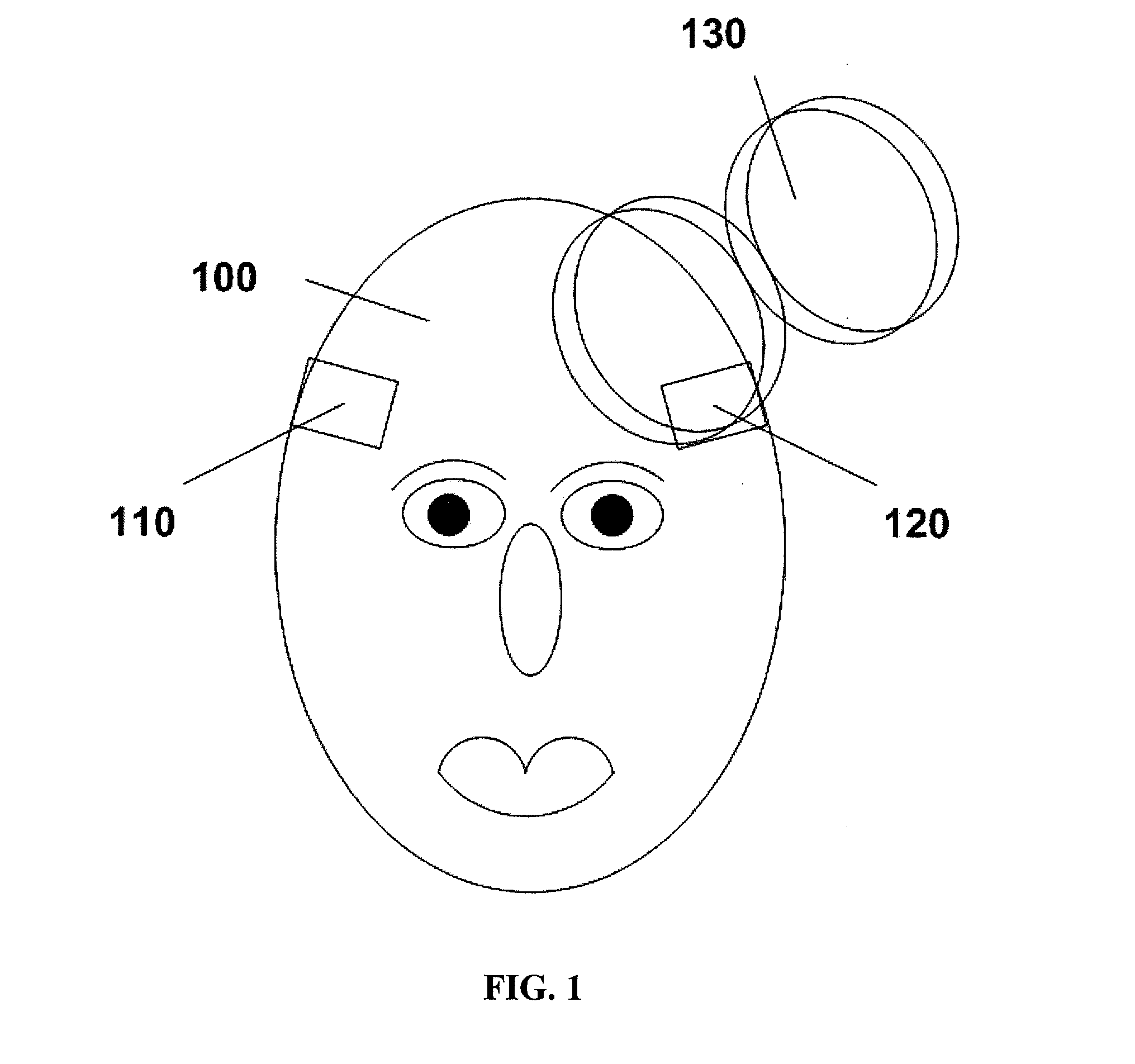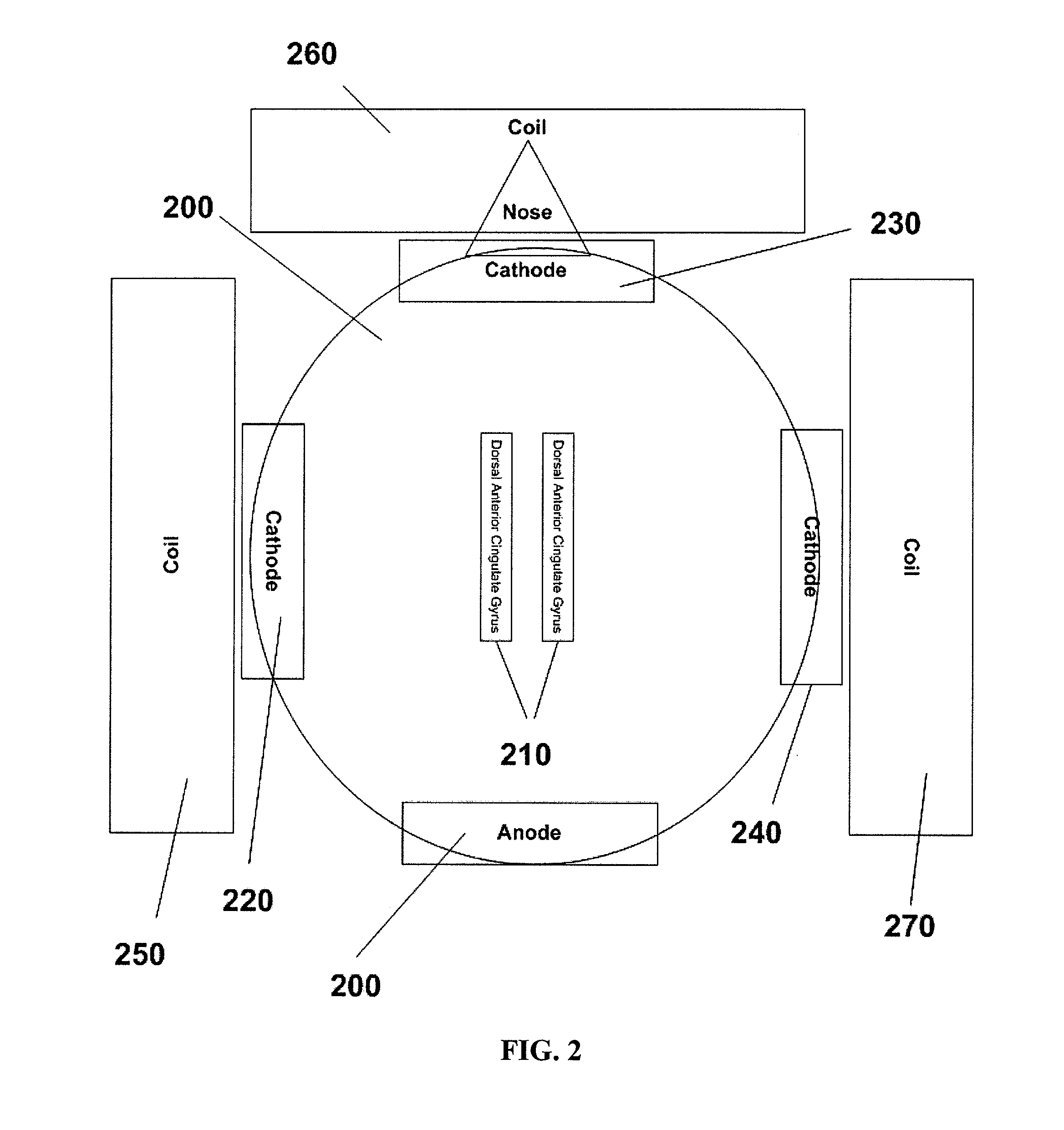Neuromodulation of deep-brain targets by transcranial magnetic stimulation enhanced by transcranial direct current stimulation
a transcranial direct current stimulation and neuromodulation technology, applied in magnetotherapy, magnetotherapy using coils/electromagnets, magnetotherapy, etc., can solve the problems of unfocused applied field, overstimulation of superficial cortex, and inability to modulate deep brain regions at helpful magnetic field strengths
- Summary
- Abstract
- Description
- Claims
- Application Information
AI Technical Summary
Benefits of technology
Problems solved by technology
Method used
Image
Examples
Embodiment Construction
[0046]In general the deep brain TMS systems described herein include one or more TMS electromagnets that are configured for deep brain TMS and one or more pairs of tDCS electrodes configured to apply DC current to modulate cortical regions immediately adjacent (e.g., beneath) the TMS electromagnet(s) to reduce or eliminate side effects such as seizures. The systems described herein may include a controller configured to control the sequence and / or timing of the TMS stimulation and tDCS stimulation, so that the TMS stimulation occurs only after (or concurrent with) the start of tDCS stimulation.
[0047]FIG. 1 illustrates one variation of a system showing a single TMS electromagnet 130 and single pair of tDCS electrodes 110, 120. This system may be configured for deep brain stimulation (e.g., stimulation of a target deep brain region) by including additional TMS electromagnets (not shown) or by moving the single TMS electromagnet so that it can stimulate the same target region from mult...
PUM
 Login to View More
Login to View More Abstract
Description
Claims
Application Information
 Login to View More
Login to View More - R&D
- Intellectual Property
- Life Sciences
- Materials
- Tech Scout
- Unparalleled Data Quality
- Higher Quality Content
- 60% Fewer Hallucinations
Browse by: Latest US Patents, China's latest patents, Technical Efficacy Thesaurus, Application Domain, Technology Topic, Popular Technical Reports.
© 2025 PatSnap. All rights reserved.Legal|Privacy policy|Modern Slavery Act Transparency Statement|Sitemap|About US| Contact US: help@patsnap.com



